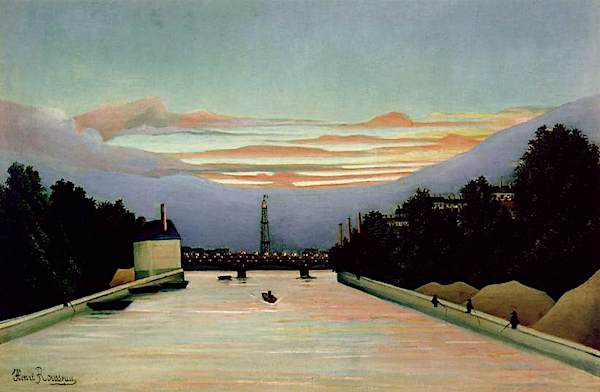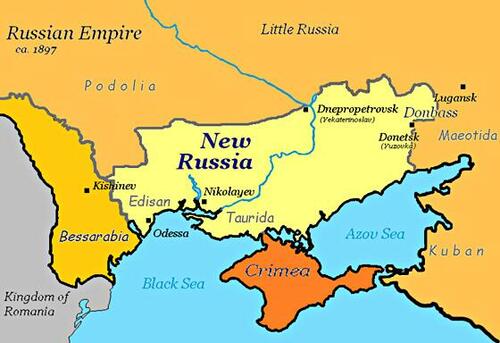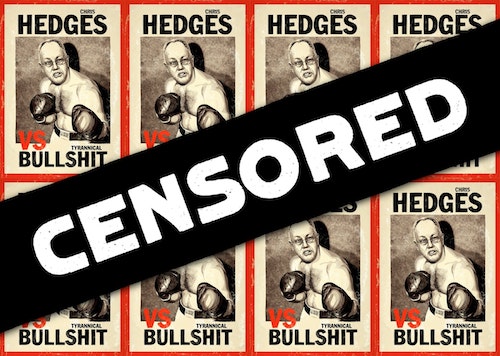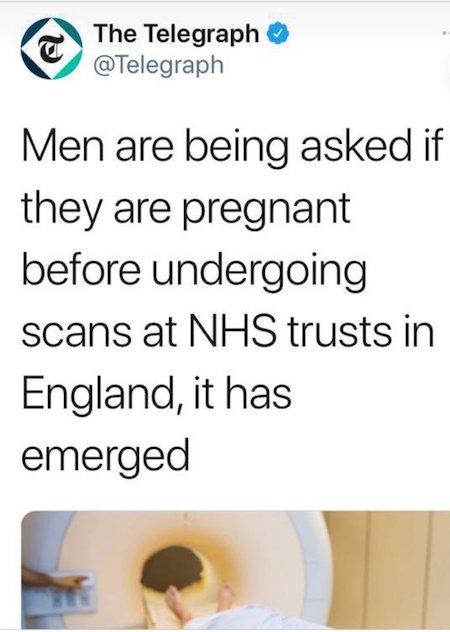
Pablo Picasso Houses 1937

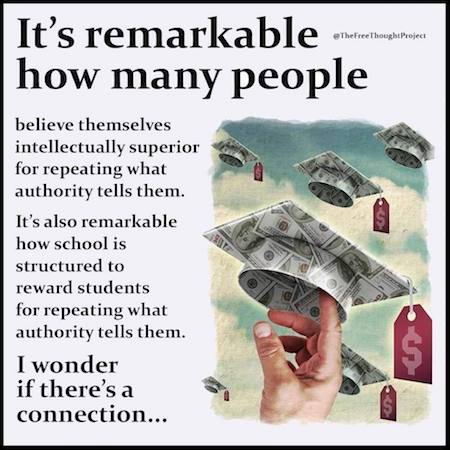

Stephen F. Cohen and John Mearsheimer
https://twitter.com/i/status/1552256839043219459

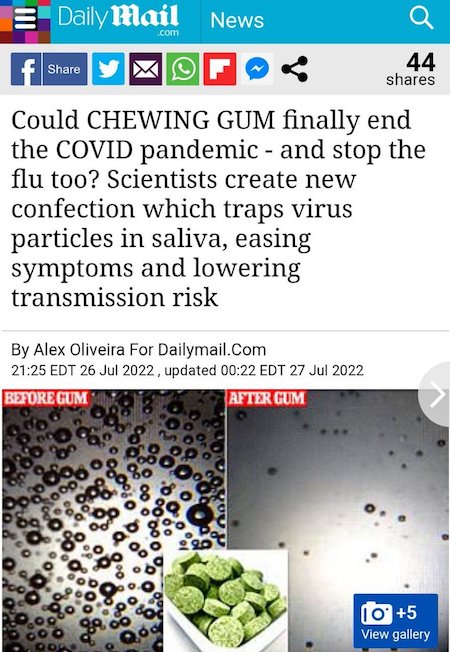

Neom is being built in Saudi Arabia.
What is this dystopian hell line city. pic.twitter.com/s7JxC9MsC5
— Ian Miles Cheong (@stillgray) July 27, 2022


“..Moscow might respond with a “massive strike” targeting the Ukrainian leadership if that happened..”
• Kiev Threatens To Attack Russian Territory (RT)
Kiev will not hesitate to strike Russian territories if it deems it necessary, Aleksey Danilov, the head of Ukraine’s National Security and Defense Council, said during a live broadcast on Wednesday. The security council closely follows all the missile and air strikes Russia launches against Ukraine, Danilov said, adding that Ukrainian authorities are well aware of all the locations in Russia from which the attacks have been carried out. Kiev possesses “enough political will” to order a strike against these targets if such a need arises, he added. “If needed … anyone [in the government] will act without hesitation and sign anything that needs to be signed to destroy these objects,”Danilov said.
The security council head also stated that Ukrainian President Vladimir Zelensky’s words about Ukraine retaliating against the locations from which the strikes are launched serves as “proof” of Kiev’s determination. Earlier, some Ukrainian officials said that Kiev forces may hit targets on the Crimean Peninsula or the Crimean Bridge, which they consider to be a key supply route for Russian forces. Ukraine’s military intelligence spokesman, Vadim Skibitskiy, claimed that Crimea could be targeted by US-supplied M142 HIMARS and M270 MLRS multiple launch rocket systems. Moscow responded by saying that Ukraine would pay a heavy price if it decided to strike Crimea. Russia’s former president, Dmitry Medvedev, said in mid-July that Moscow might respond with a “massive strike” targeting the Ukrainian leadership if that happened.
The US and its allies previously appeared to be reluctant to supply Ukraine with longer-range weapons capable of striking targets deep inside Russia as they were concerned about a potential escalation of the conflict. Washington has not yet agreed to send tactical ballistic missiles with a distance of up to 300 kilometers to Ukraine. Such missiles can be used by the US-made HIMARS multiple rocket launchers the US handed over to Kiev. However, according to the spokesman for the army of the Donetsk People’s Republic (DPR), Eduard Basurin, Ukrainian forces may have already received 300km-range HIMARS missiles. DPR troops have found pieces of munitions with a range of 110 kilometers to 120 kilometers, which meant that Kiev could have the 300km-missiles as well, Basurin told the Russian media last week.

“Seven regions in the West have been annexed by Poland, and three in the southwest by Hungary and Romania, respectively. Everything else is marked “Russia.”
• Former Russian President Presents Future Map Of Ukraine (RT)
Ukraine is more likely to be reduced to Kiev and its surroundings than to ever encompass Crimea and the Donbass republics, former Russian president Dmitry Medvedev said Wednesday on his Telegram channel. The one-time president and long-time prime minister who now heads the national security council also posted two maps helpfully illustrating his argument. The first map showed Ukraine in borders prior to the US-backed coup in 2014, including Crimea and the two eastern regions of Donetsk and Lugansk. A month after the militants backed by Washington seized power in Kiev, Crimea voted to rejoin Russia, while the two Donbass regions declared independence. “In the mind of the president of Ukraine, damaged by psychotropic substances, this is what the map of his country’s bright future will look like,” Medvedev wrote on Telegram.
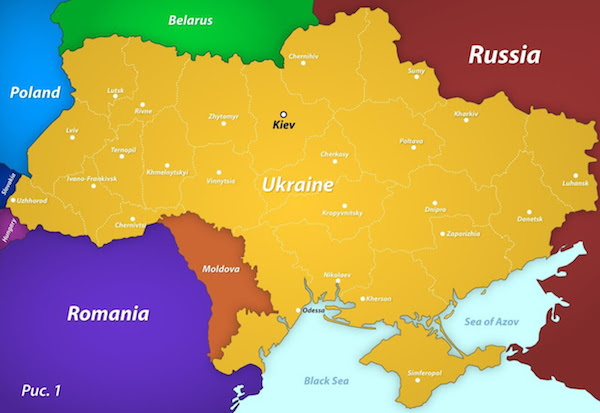
“Western analysts believe it will look like this, actually,” he said, posting a second map. On it, “Ukraine” is reduced to Kiev and its surroundings. Seven regions in the West have been annexed by Poland, and three in the southwest by Hungary and Romania, respectively. Everything else is marked “Russia.” He did not specify which Western experts may have envisioned such a partition.
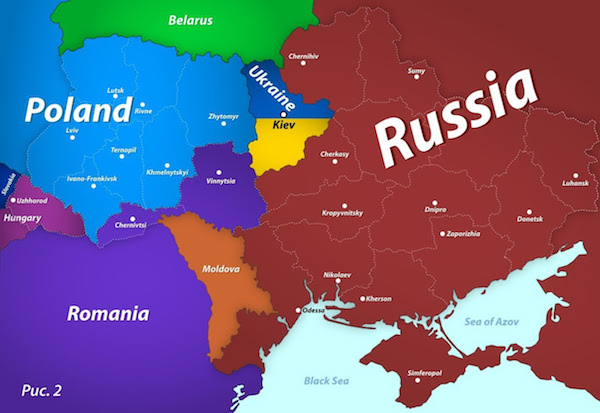
The Ukrainian government has repeatedly rejected any possibility of territorial concessions, insisting that Kiev’s objectives were a “capitulation” of Russia and “reintegration” of Donbass and Crimea. Medvedev served as president of Russia between 2008 and 2012, and then as prime minister until 2020, when he was put in charge of the national security council. Over the course of the conflict in Ukraine, he has made a name for himself with colorful Telegram posts. Just this month, he warned Kiev of “Judgment Day”if they attacked Crimea and offered a list of “Russian sins,” followed up by those of the West.

Lip service solidarity.
• Flaws in EU Gas Rationing Plan Revealed (RT)
The EU’s gas rationing plan approved on Tuesday may not stand the test of a cold winter, The Economist wrote on Wednesday. A “meagre” cut to gas consumption will not solve the continent’s problems, the publication wrote, referring to the plan that will see most EU nations voluntarily reduce their use of natural gas by 15% between August 1 and March 31 next year. The deal was struck as fears grow over a possible halt of Russian gas supplies. At the moment the Nord Stream 1 pipeline, a key artery that carries natural gas from Russia to Germany, is operating at 20% capacity. Russian energy giant Gazprom cites technical issues with turbines as the reason for the reduced flow. However, the EU believes that Moscow is using gas to exert political pressure on the bloc. An alternative route via Ukraine has been restricted by Kiev.
The main reason for the rationing is to “ensure that a shortfall of Russian gas does not leave homes unheated or factories shuttered”, The Economist writes, but according to the publication, its success largely depends on the weather. “If the coming winter is mild, the EU may scrape by. But if it is cold the bloc will have to prove that it can hold together when times are hard. Germany in particular will need to show solidarity with other member countries. It sits at the center of Europe’s network of gas pipelines. Will it, for instance, allow gas to flow to the Czech Republic to keep people from freezing there if that means its factories have to go on furlough?” the publication writes, adding that at the start of the coronavirus pandemic in 2020 some European countries, including Germany, imposed bans on exports of protective gear to avoid shortages at home.
The plan has several other weaknesses, The Economist notes, such as different levels of exposure to Russian gas among the nations. Before its approval, a number of countries including Italy, Hungary, Poland, Portugal and Spain voiced their concerns, saying that they had already cut consumption, citing a lack of connection to Europe’s gas pipeline network and the fact that decisions on energy are usually a national issue, Bloomberg wrote earlier. The approved plan came with some exemptions, with Spain and Portugal reportedly allowed to use just 7% less gas. Other concessions were made too but proved not enough to get the plan unanimous approval, with Hungary voting against it.

“NS2 does not use Siemens turbines, and can be maintained regardless of the sanctions.”
• German Mayors Want Nord Stream 2 Opened (RT)
Berlin’s policy of trying to give up imports of Russian natural gas is likely to create hardship and spark unrest, seven mayors from the German island of Ruegen wrote in a letter sent to the regional and federal governments on Wednesday. They also urged the federal government to allow gas imports via the Nord Stream 2 pipeline, given the current technical difficulties with Nord Stream 1 – something Berlin has steadfastly rejected. In the letter addressed to federal economy minister Robert Habeck and Manuela Schwesig, prime minister of Mecklenburg-Vorpommern, the mayors “strongly condemn” the current conflict in Ukraine but urge the government to consider the damage its policy could do to the German population and the economy, according to the news agency DPA.
“We are of the opinion that the path taken by the federal government to disconnect from Russian energy sources is not the right one,” the seven mayors wrote. Initially drafted by the leaders of Bergen, Binz and Sassnitz, the letter was later signed by four more jurisdictions on Ruegen, Germany’s largest island and a popular tourist destination. Giving up gas imports from Russia would mean an explosion in the cost of living, which would lead to social instability and unrest that could get out of control, the mayors wrote, according to German media. Calls from the federal government to save energy – such as showering less and foregoing hot water – “defy understanding,” they added.
“As the mayors of this island, we don’t want to have to accept any further restrictions,” Sassnitz city manager Frank Kracht told the Mecklenburg-Vorpommern affiliate of the TV station NDR. Rejecting the proposals to expand the number of wind turbines near residential areas, calling them a health hazard, the mayors advocated “a general rethinking of the solution to the current problems in relations with Russia.” Among their suggestions was to get additional natural gas via the Nord Stream 2 pipeline. Finished in late 2021, the pipeline from Russia to Germany under the Baltic Sea was just waiting for the operating permit from Berlin – which was suspended indefinitely on February 22, two days before Russia sent troops into Ukraine.
NS2 was supposed to double the volume of Russian gas exports, but was delayed by US sanctions seeking to protect Ukraine’s gas transit earnings. Nord Stream 1, which continues to supply Germany with gas, is currently operating at only 20% capacity, due to maintenance requirements. Its operator, Gazprom, says several turbines at the Portovaya compressor station need servicing to maintain certification. The first one was held up by Canada, citing anti-Russian sanctions over the conflict in Ukraine, until Berlin intervened seeking an exemption. NS2 does not use Siemens turbines, and can be maintained regardless of the sanctions.

Deep dive.
• The National Tragedy of Hunter Biden’s Laptop (Lee Smith)
In September 2020, the repairman gave a copy of the hard drive to Rudolph Giuliani’s lawyer. The former New York City mayor had been investigating the Bidens’ work in Ukraine for nearly two years at that point after receiving a tip from a former federal prosecutor. Giuliani helped disseminate copies of the hard drive, one of which Maxey took to The Washington Post. Nine months after Maxey sat with Post reporters to explain the contents of the hard drive, the paper reported its own independent authentication of 22,000 emails in March of 2022. These included communications regarding a deal with a Chinese energy company that earned Hunter $5 million, and his work with Burisma, the Ukrainian energy firm that paid him $83,333 per month to sit on its board.
His father later boasted in public that he’d threatened to withhold a $1 billion loan guarantee to Ukraine unless the central government in Kyiv fired the prosecutor investigating Burisma. At roughly the same time The Washington Post authenticated these emails, The New York Times also verified communications found on Hunter Biden’s computer. So, have America’s two most prestigious newsprint organizations at last acknowledged that they were wrong to believe former intelligence officials who claimed the New York Post’s October 2020 reporting on the Biden laptop was Russian disinformation? Of course not. They were and remain proud of their role in helping push Trump out of Washington. According to one survey, one out of six Biden voters said that had they known about Hunter’s laptop in time, they wouldn’t have voted for his father.
What concerned the prestige press wasn’t that they’d missed a big story—or that they’d participated in a campaign run by U.S. intelligence services to prevent American voters from learning about the extent of the Bidens’ political and moral corruption. Rather, they were worried that an even bigger story about the Bidens might be coming down the road. Maxey says he called the Post in March to say he was taking the hard drive to Switzerland to meet with a cyber expert named Vincent Kaufmann who told him he thought he could retrieve material deleted from the laptop. The Times published its story two days after Maxey landed in Zurich, and the Post published its own “investigation” two weeks later, pronouncing some of the emails genuine while claiming it was hard to tell with others. As a longtime platform for U.S. intelligence operations—and owned by the same man, Jeff Bezos, who owns the cloud computing technology that Amazon Web Services uses to store the CIA’s information—the Post wanted to help the White House get ahead of potential problems.

Google translate. Rutte is blowing up his own country.
• New Dutch Minister No Longer Rules Out Compulsory Buy-out Of Farmers (AD)
Where the cabinet previously spoke of ‘starting a conversation on the farm about new possibilities’, there is now a completely different tone. The new minister Christianne van der Wal no longer excludes compulsory buy-out of farmers. It still sounded friendly in the coalition agreement. “We will start a conversation on the farm to look for the possibilities together,” the cabinet said in a sweet note in mid-December. When Van der Wal is asked in a debate with the House of Representatives on Thursday what she actually means by that sentence, she says that it will certainly be difficult for farmers who run a business from generation to generation, who just want to continue with their business. . But she also emphasizes: ,,I want to tell the honest story. And that is that this is not feasible in every area.”
The government wants to encourage as many farmers as possible to participate voluntarily in reducing nitrogen emissions. But meanwhile, heavier terms are also sounding, such as ‘expropriation’ and ‘not escaping’ from forced sale. The new VVD minister takes a harder tone. The Minister for Nature and Nitrogen expects that compulsory buy-out of farmers cannot be avoided in several cases. “It’s a last resort, but at the same time it’s a realism that we can’t always avoid it. I really can’t rule it out,” she admits. The liberal politician wants to work with a reward system in 2022 and 2023. The sooner you decide to stop, the higher the compensation. After that period it becomes less friendly. “The honest story is that you cannot escape expropriation, if the voluntariness is not there.”
Within a few weeks she will send a plan to the House, stating how she wants to tackle the nitrogen problem. Maybe she will peek at the neighbors for that. Two weeks ago, the Flemish government declared that the most polluting livestock farms must close by 2025. That is about sixty companies. More than a hundred other livestock farms have to significantly reduce their nitrogen emissions. Nitrogen is a major problem in both the Netherlands and Flanders, following a court ruling. Only in the Netherlands this is a multiple of the number of farmers in Flanders.

All they have is wordgames. AKA You’re on your own.
• A Recession by Any Other Name (Magness)
The Biden administration appears to be preparing for a recession—or rather, for news of one. Rather than tackling the underlying economic problems, the White House is playing word games. Economists have long defined a recession as “a period in which real GDP declines for at least two consecutive quarters,” to quote the popular economics textbook by Nobel laureates Paul Samuelson and William Nordhaus. This definition isn’t perfect, but it describes almost every downturn since World War II. With expectations of low or even negative growth for the first two quarters of 2022, President Biden’s Council of Economic Advisers has been trying to blunt the news by disavowing this textbook definition. It is “neither the official definition nor the way economists evaluate the state of the business cycle,” reads a post on the White House website.
Treasury Secretary Janet Yellen endorsed the claim on NBC over the weekend. In place of the standard economic definition of a recession, administration officials point to the business-cycle dating committee of the National Bureau of Economic Research as the “official recession scorekeeper.” It’s a highly convenient move for them. While the nonpartisan NBER employs a robust set of indicators to pinpoint recessions, it does so retrospectively. The great recession of 2007-09, for example, had already been under way for a year before the NBER released its determination. Sometimes recessions end by the time NBER classifies them, and this built-in delay limits the utility of NBER scorekeeping for real-time policy decisions.
The White House’s attempt to wordsmith its way around a recession shows the dangers of politicizing economic terms. Mr. Biden’s economic advisers are trying to buy time by exploiting NBER’s otherwise defensible methodology. They hope doing so will insulate the administration from the electoral backlash in the event of a downturn. There is no federal statute that appoints the NBER as the official arbiter of recessions. Quite the contrary, the federal government has historically followed the conventional textbook definition. The Gramm-Rudman-Hollings Act of 1985, which attempted to rein in the deficit by triggering mandatory sequestrations in federal agencies, introduced a recessionary escape clause for tough economic times. If the Congressional Budget Office projected a recession, Congress could fast-track a vote to suspend the sequestrations. The law defined a recession as a period when “real economic growth is projected or estimated to be less than zero with respect to each of any two consecutive quarters.”
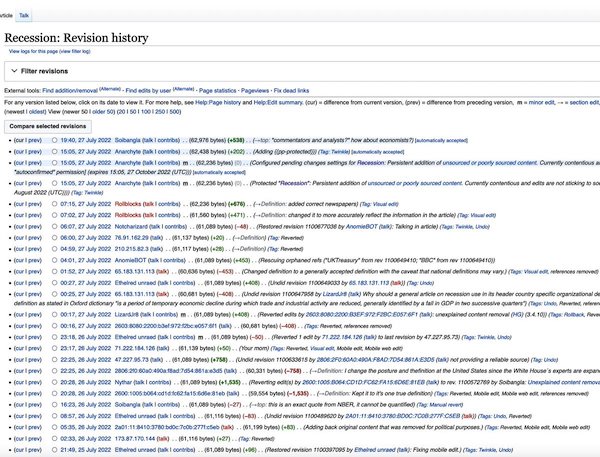

“Since nobody can ever consume more than 100% of anything this means that all such attempts, unless abandoned and reversed lead to economic disaster.”
• No, The Economy Will NOT Be OK (Denninger)
No, this is not transitory. And since we’re headed for political season let me remind you of the sordid tale that led us here. We elected Donald Trump as President. Donald Trump deliberately, from his first day, pushed “easy money” policies that were in fact how he levered his real estate empire to “success.” Easy money policies are a scam, but a very easy to run scam that appears to be “great” for a while. The reason is simple. Take a “model economy” with, for example, GDP of $100,000. Presume 10% of the GDP is out in debt ($10,000) and further presume that the rate of interest, on average, is 2%. At the same time presume the nominal (that is, “in dollars”) growth rate of GDP is 3%. This looks “safe”, right? Well, it is if the amount of debt remains the same.
But it won’t because the rate of interest is less than the growth rate, that is, you’re paying people to borrow into existence credit that has nothing behind it “on the come” that the economy will expand, and they will do exactly that. sIf the amount of debt expands at 4% while the economy expands at 3% no matter the rate of interest above zero interest expense will eventually consume all economic output. Since nobody can ever consume more than 100% of anything this means that all such attempts, unless abandoned and reversed lead to economic disaster. This is not a matter of policy or debate it is mathematical fact and cannot be changed any more than 2 + 2 can made equal to anything other than 4. Now there is an argument for this sort of policy during recessions; in fact this was Keynes’ argument for attempting to level economic conditions: You spend in excess (that is, in deficit) during recessions, and you tax in excess during good times. This retards the economy during good times and boosts it during bad.
The problem: During good times nobody will do the necessary thing to balance the system; Keynes was a fool in that he believed in that which was impossible, which is to expect politicians to voluntarily screw themselves out of a job. Trump knew all of this and that borrowing at below the rate of economic expansion, whatever it is, screws someone. He knew it because he nearly blew his nascent empire up early in his career getting levered up into the maw of a recession, which came within an inch of destroying him economically. He was bailed out, which informed his future actions decades later when he had the power to bail himself and his political friends out as President. It is a fact that Trump ran record deficits during an economic expansion and he did it on purpose with the full consent and in fact authorship of Congress. That’s because under our Constitution Congress must do that in that all spending bills must originate in the US House.
That is, it’s not Bidenflation to start — it was Trumpflation. Biden and the Democrats, emboldened with what Trump got away with and the public clamor for more, piled it on even deeper once he got into office. But this time, as with all other times, it takes time for that to filter through to prices. Nixon created the conditions under which Ford and then Carter (and all of us) suffered; it was Nixon’s wage and price controls, along with his (according to historians) literal assault on Burns, the chair of The Fed at the time, that led to ruinous stagflation under Ford and Carter’s Presidency.

” It’s not entirely clear, to me in any case, that Trump knew what was happening even then. He had a sense that he was doing something to stop the spread but he didn’t know entirely what.”
• The Small Print That Destroyed America (Tucker)
In a maddening interview yesterday, Anthony Fauci performed his usual song and dance when faced with even the most mild questioning. He stonewalled in his trademarked way. He spoke in long, drawn-out sentences, emphasizing the word consonants, punctuated by pauses and silences that convey the sense of precision without the reality. He strung together terms that seem vaguely scientific which intimidated his interviewers into an overly cautious pose. “Oh wow, I’m interviewing a very powerful person,” the interviewer thinks, “so I had better not say anything wrong!” He’s been pulling this trick for 40 years. He is very good at it.
In this interview, several messages stands out: 1) in retrospect, we should have locked down even more, 2) he never pushed lockdowns; he was only passing on CDC guidance, and 3) he is utterly and completely blameless for all things, particularly in funding gain-of-function research which, in any case, is not responsible for the creation of the virus in Wuhan. The first part is startling because many of us have had the sense that lockdowns are in disrepute. Far from it: Fauci’s message is that next time, the lockdowns will be harder and longer. And there certainly will be more. The third part I feel sure will be revealed in time. The fear that the virus escaped from the lab is likely what drove the lockdowns agenda. What intrigues me the most is the second part, the claim that he never ordered lockdowns. This was the CDC and he only served as messenger. Everyone else is to blame for anything that went wrong.
In a second interview the same day, Fauci says this explicitly: “All I have ever done, if you go back and look at everything I’ve ever done, was to recommend common-sense, good CDC-recommended public health policies that have saved millions of lives. If you want to investigate me for that, go ahead.” I’m going back to the March 16, 2020, press conference at which Fauci, Deborah Birx, and Donald Trump are announcing a fundamental change of life in the United States, one that would disregard all normal rights and liberties. It’s not entirely clear, to me in any case, that Trump knew what was happening even then. He had a sense that he was doing something to stop the spread but he didn’t know entirely what.
This has always puzzled me. It’s one thing for him to be hornswoggled into greenlighting the destruction of the economy that was booming and roaring under his administration. That’s bad enough. But to be confused even about the details of what he was ordering that day is next-level stuff. The following exchange occurred that day. Trump is asked whether restaurants and other venues should close. Trump responds: “Right now we don’t have an order one way or the other. We don’t have an order, but I think it’s probably better that you don’t [go to restaurants].” From that, I gather that Trump believed that he was not forcing anything on anyone. A reporter asks for a clarification: “Telling people to avoid restaurants and bars is a different thing than saying that bars and restaurants should shut down over the next 15 days.
So why was it seen as being imprudent or not necessarily to take that additional step offered at additional guidance?” At this point, Trump demurs and turns over the microphone to Deborah Birx, who must not have been paying attention and says something vague about the virus living on hard surfaces. At this point, Fauci interrupts and says: “I just want, there’s an answer to this.” Fauci says the following: “The small print here. It’s really small print. ‘In states with evidence of community transmission, bars, restaurants, food courts, gyms and other indoor and outdoor venues where groups of people congregate should be closed.’”

1899-2022.
• Inventing Diagnoses to Cover Up Vaccine Injury (CHD)
So-called “fact-checkers” are having to work double-time to come up with ways to deny the undeniable fact that COVID-19 vaccines are causing injuries and deaths on a massive scale. The shot pushers and their media enablers have taken cover-up tactics to absurd new heights by, for example, chalking up the rash of fatal heart attacks and overnight deaths in athletes and young adults to a fluky condition referred to variously as “sudden adult death syndrome” or “sudden arrhythmic death syndrome” (SADS). What the COVID-19 vaccine-injured do not necessarily recognize, however, is the pretense that post-vaccination injuries and deaths are just “sad coincidences” — far from being unique to the pandemic jabs — is a trick as old as vaccination itself.
Facilitated by well-honed semantic and statistical flimflam, public health officials’ core strategy for perpetuating their fiction is to profess innocence — making unabashedly unsubstantiated pronouncements about vaccine safety, on the one hand, while on the other hand, declaring themselves “baffled” by ailments that emerge in the aftermath of a given vaccine’s rollout. In an astonishingly frank and prescient book, “The Fallacy of Vaccination,” published in 1899, Dr. Alexander Wilder called attention to the “growing conviction” among “profounder thinkers and observers” that vaccination was not only “utterly useless as a preventive” but “actually the means of disseminating disease afresh where it is performed.” Wilder noted, “whenever a vaccinator or corps of vaccinators set out upon a vaccinating crusade, there follows very generally a number of deaths from … maladies which have been induced by the operation. …”
Wilder also blew the whistle on the suppression and concealment of vaccine adverse events and deaths, describing a fellow physician’s urging of his “professional brethren to be slow to publish fatal cases of smallpox after vaccination” and outlining other shenanigans that sound all too familiar today: “Occasionally … a death by vaccination is published, and immediately the effort is put forth assiduously to make it to be believed that it was from some other cause. The statistics of smallpox, purporting to distinguish between vaccinated and unvaccinated persons, are too often not quite trustworthy. Many persons who have been vaccinated are falsely reported as unvaccinated. “Even when death occurs as the result of vaccination, the truth is concealed and the case represented as scarlet fever, measles, erysipelas [bacterial skin infection], or some ‘masked’ disease, in order to prevent too close questioning.”
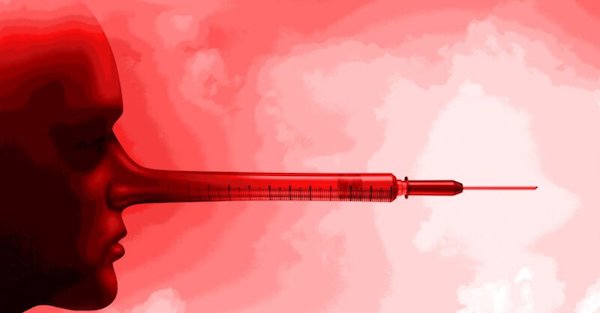

It’s all for your own good.
• How the CDC Coordinated With Big Tech To Censor Americans (WFB)
The Centers for Disease Control and Prevention coordinated with social media companies and Google to censor users who expressed skepticism or criticism of COVID-19 vaccines, according to a trove of internal communications obtained by America First Legal and shared exclusively with the Washington Free Beacon. Over the course of at least six months, starting in December 2020, CDC officials regularly communicated with personnel at Twitter, Facebook, and Google over “vaccine misinformation.” At various times, CDC officials would flag specific posts by users on social media platforms such as Twitter as “example posts.” In one email to a CDC staffer, a Twitter employee said he is “looking forward to setting up regular chats” with the agency.
Other emails show the scheduling of meetings with the CDC over how to best police alleged misinformation about COVID-19 vaccines. Although many of the posts flagged by the CDC contained false information about the COVID-19 vaccines, the efforts to police misinformation also resulted in mistaken acts of censorship. An April 2021 email from a CDC staffer to Facebook states that the “algorithms that Facebook and other social media networks are apparently using to screen out posting by sources of vaccine misinformation are also apparently screening out valid public health messaging, including [Wyoming] Health communications.” The communications reveal a high level of coordination between the government and tech industry during the pandemic and raise questions about the extent to which other private companies are working with the federal government to censor the public.
The Biden administration has faced criticism for engaging in what some have called “Orwellian” practices, such as the establishment of the Department of Homeland Security Disinformation Governance Board. The Free Beacon reported that the now-shuttered disinformation board arranged a meeting with a Twitter executive who blocked users from sharing stories about Hunter Biden’s laptop. The CDC’s effort to police alleged disinformation expanded to other federal agencies as well. An internal March 2021 email from a senior CDC staffer states “we are working on [sic] project with Census to leverage their infrastructure to identify and monitor social media for vaccine misinformation.”




Gonzalo : The Persecution of Alina Lipp and Graham Phillips



Wonderful dog life
https://twitter.com/i/status/1552051138530349062

Old dogs
Adopting a senior dog is the BEST ❤️ pic.twitter.com/NUG7iIHZDt
— The Dodo (@dodo) July 26, 2022

Sculpt
https://twitter.com/i/status/1552260484681928704

Support the Automatic Earth in virustime with Paypal, Bitcoin and Patreon.



